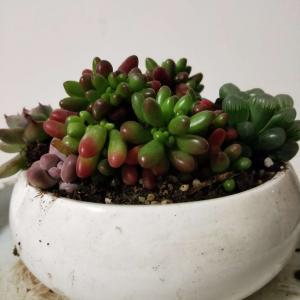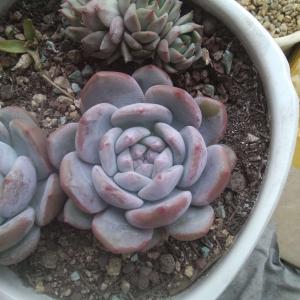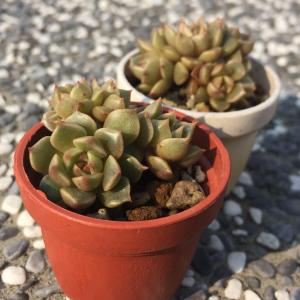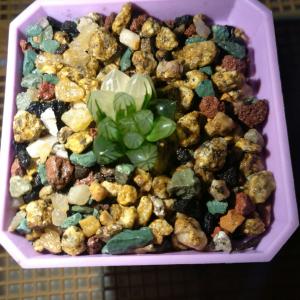文章
Miss Chen
2018年03月19日

Description: This annual or biennial wildflower develops ascending to sprawling stems about 1½–3' long. The stems are light green to reddish green and pubescent with short spreading hairs. Either opposite or alternate leaves occur at intervals along the stems; the leaf blades are up to 3" long and 3" across and deeply cleft into 3-5 palmate lobes. The leaf margins are sparingly dentate or further divided into small secondary lobes. The upper leaf surfaces are medium green and hairless (or sparingly so), while the their lower surfaces are pale green and pubescent. The petioles are light green and pubescent. At the base of each petiole, there is a pair of small linear stipules. From the axils of the middle to upper leaves, clusters of 2 or more flowers develop on slender pubescent stalks; these stalks are about ¾–1½" long at maturity.
Each flower is about 1/3" (8 mm.) across, consisting of 5 light pink petals, 5 green sepals, 10 stamens, and a pistil. Fine pink lines radiate from the throat of each flower. The petals are oblong in shape and slightly notched at their tips. The sepals are lanceolate to ovate and pubescent; each sepal has an awn-like tip about 1.5 mm. long. The blooming period occurs during the summer and lasts about 2 months. Usually, only a few flowers are in bloom at the same time. Each flower is replaced by a narrow columnar fruit about ½–¾" long that tapers to a short beak. At maturity, the fruit splits open into 5 slender sections from the bottom, remaining connected together at the apex. By this process, the seeds are mechanically ejected from the mother plant.
Cultivation: The preference is partial sun, mesic to dry-mesic conditions, and cool to warm summer temperatures. Different kinds of soil are tolerated, including those that are sandy or rocky.
Range & Habitat: Northern Cranesbill is restricted to NE Illinois, where it is rare and native to the area (see Distribution Map). This species is state-listed as 'endangered.' Illinois lies at the southern range-limit of this boreal wildflower. Habitats include woodland openings, sandy Black Oak woodlands, typical and sandy savannas, and rocky outcrops. This wildflower becomes more abundant after a wildfire; there is some evidence that its seeds germinate in response to heat and/or light.

Faunal Associations: The flowers are pollinated by small flies (particularly Syrphid flies) and small bees (particularly Halictid bees). Both nectar and pollen are available as floral rewards to such visitors. One insect that sucks on the juices of Geranium spp. is Macrosiphum geranii (Geranium Aphid). The seeds of some Geranium spp. are eaten by such birds as the Mourning Dove and Bobwhite Quail to a limited extent.
Photographic Location: A nature preserve in Cook County, Illinois. The photographs were taken by Lisa Culp (Copyright © 2009).
Comments: This is one of several annual or biennial Geraniums (Geranium spp.) in Illinois. The majority of these species have been introduced from Eurasia, although some of them are native. All of these species have relatively small flowers, palmately cleft simple leaves (see exception below), and a sprawling to ascending habit. As a result, they can be difficult to distinguish from each other. Northern Cranesbill can be identified through the following combination of characteristics: 1) It produces small flowers (about 1/3" across) in clusters of 2 or more, 2) the stems and stalks of the flowers are pubescent with short spreading hairs, 3) the pedicels of the flowers/fruits are longer than the sepals, and 4) the sepals have awn-like tips. One aberrant species in this group, Herb Robert (Geranium robertianum), differs from the others by its leaves, which are palmately divided into leaflets with petioles.
Each flower is about 1/3" (8 mm.) across, consisting of 5 light pink petals, 5 green sepals, 10 stamens, and a pistil. Fine pink lines radiate from the throat of each flower. The petals are oblong in shape and slightly notched at their tips. The sepals are lanceolate to ovate and pubescent; each sepal has an awn-like tip about 1.5 mm. long. The blooming period occurs during the summer and lasts about 2 months. Usually, only a few flowers are in bloom at the same time. Each flower is replaced by a narrow columnar fruit about ½–¾" long that tapers to a short beak. At maturity, the fruit splits open into 5 slender sections from the bottom, remaining connected together at the apex. By this process, the seeds are mechanically ejected from the mother plant.
Cultivation: The preference is partial sun, mesic to dry-mesic conditions, and cool to warm summer temperatures. Different kinds of soil are tolerated, including those that are sandy or rocky.
Range & Habitat: Northern Cranesbill is restricted to NE Illinois, where it is rare and native to the area (see Distribution Map). This species is state-listed as 'endangered.' Illinois lies at the southern range-limit of this boreal wildflower. Habitats include woodland openings, sandy Black Oak woodlands, typical and sandy savannas, and rocky outcrops. This wildflower becomes more abundant after a wildfire; there is some evidence that its seeds germinate in response to heat and/or light.

Faunal Associations: The flowers are pollinated by small flies (particularly Syrphid flies) and small bees (particularly Halictid bees). Both nectar and pollen are available as floral rewards to such visitors. One insect that sucks on the juices of Geranium spp. is Macrosiphum geranii (Geranium Aphid). The seeds of some Geranium spp. are eaten by such birds as the Mourning Dove and Bobwhite Quail to a limited extent.
Photographic Location: A nature preserve in Cook County, Illinois. The photographs were taken by Lisa Culp (Copyright © 2009).
Comments: This is one of several annual or biennial Geraniums (Geranium spp.) in Illinois. The majority of these species have been introduced from Eurasia, although some of them are native. All of these species have relatively small flowers, palmately cleft simple leaves (see exception below), and a sprawling to ascending habit. As a result, they can be difficult to distinguish from each other. Northern Cranesbill can be identified through the following combination of characteristics: 1) It produces small flowers (about 1/3" across) in clusters of 2 or more, 2) the stems and stalks of the flowers are pubescent with short spreading hairs, 3) the pedicels of the flowers/fruits are longer than the sepals, and 4) the sepals have awn-like tips. One aberrant species in this group, Herb Robert (Geranium robertianum), differs from the others by its leaves, which are palmately divided into leaflets with petioles.
0
0
文章
Miss Chen
2018年03月19日

Description: This perennial plant is 1-2' tall, with a stout smooth stem that is unbranched. The yellowish or olive green leaves are opposite and strongly clasp the central stem. However, the three leaves beneath the uppermost flowers are whorled. These leaves are broadly lanceolate, ovate, or cordate, and extend up to 3" long and 2" across. There is a prominent central vein, and two side veins that parallel the smooth margins. In the upper half of the plant, 2-7 flowers emerge from the axils of the leaves, with a greater number of flowers at the apex. The tube-shaped flowers are individually about 1½" long and ¾" across, and have 5 petals with small erect tips. They are white, greenish white, or yellowish white, depending on the local ecotype. The blooming period is late summer, and lasts about 1 or 1½ months. There is no noticeable fragrance to the flowers. The seed capsules split into 2 sections, releasing numerous small seeds that can be dispersed by wind or water. The root system consists of a long stout taproot.
Cultivation: The preference is full to partial sun, and moist to average soil conditions. The soil can contain significant amounts of loam, clay, gravel, or sand. Starting plants from seed can be tricky, while transplants are much easier to manage. A yellowish appearance of the leaves is a common reaction to strong sunlight or dry weather, and does not necessarily signify disease or poor health.
Range & Habitat: The native Cream Gentian is a rare plant that occurs in scattered counties in Illinois (see Distribution Map). It can be found in mesic black soil prairies, where it will occasionally form sizeable colonies. Other habitats include the edges of upland forests, sandy oak savannas, limestone glades, and rocky bluffs. Populations of this plant may have occurred in other habitats, such as sand or gravel prairies, but were destroyed before they could be identified.
Faunal Associations: Bumblebees are the primary pollinators of the flowers, where they seek nectar. Some beetles, such as Epicauta pensylvanica (Black Blister Beetle), have been known to knaw on the flowers. White-tailed Deer occasionally chomp off the tops of Cream Gentian plants, but it is not preferred as a food source because of the bitter leaves (personal observation). The relationship of Cream Gentian to other mammalian herbivores is not known at the present time.

Photographic Location: The photographs were taken at Meadowbrook Park in Urbana, Illinois.
Comments: This gentian can be easily distinguished from the others by the absence of blue in the flower. The flowers are not as closed as the Bottle Gentians (e.g., Gentiana andrewsii), but less open than the Prairie Gentian (Gentiana puberulenta). Cream Gentian also blooms about 3 weeks earlier than other gentians. Because it blends into the background of a prairie quite well, this plant can be easy to overlook, even when it is in flower. Like many other gentians, Cream Gentian has an otherworldly beauty that is oddly attractive. Another scientific name for this plant is Gentiana flavida.
Cultivation: The preference is full to partial sun, and moist to average soil conditions. The soil can contain significant amounts of loam, clay, gravel, or sand. Starting plants from seed can be tricky, while transplants are much easier to manage. A yellowish appearance of the leaves is a common reaction to strong sunlight or dry weather, and does not necessarily signify disease or poor health.
Range & Habitat: The native Cream Gentian is a rare plant that occurs in scattered counties in Illinois (see Distribution Map). It can be found in mesic black soil prairies, where it will occasionally form sizeable colonies. Other habitats include the edges of upland forests, sandy oak savannas, limestone glades, and rocky bluffs. Populations of this plant may have occurred in other habitats, such as sand or gravel prairies, but were destroyed before they could be identified.
Faunal Associations: Bumblebees are the primary pollinators of the flowers, where they seek nectar. Some beetles, such as Epicauta pensylvanica (Black Blister Beetle), have been known to knaw on the flowers. White-tailed Deer occasionally chomp off the tops of Cream Gentian plants, but it is not preferred as a food source because of the bitter leaves (personal observation). The relationship of Cream Gentian to other mammalian herbivores is not known at the present time.

Photographic Location: The photographs were taken at Meadowbrook Park in Urbana, Illinois.
Comments: This gentian can be easily distinguished from the others by the absence of blue in the flower. The flowers are not as closed as the Bottle Gentians (e.g., Gentiana andrewsii), but less open than the Prairie Gentian (Gentiana puberulenta). Cream Gentian also blooms about 3 weeks earlier than other gentians. Because it blends into the background of a prairie quite well, this plant can be easy to overlook, even when it is in flower. Like many other gentians, Cream Gentian has an otherworldly beauty that is oddly attractive. Another scientific name for this plant is Gentiana flavida.
0
0
文章
Miss Chen
2018年03月19日

Description: This low deciduous shrub is 1-3' tall, branching occasionally. Young stems are yellowish green to reddish brown, pubescent or hairless, while older stems are light gray to nearly black. The wood of the stems is relatively brittle and weak. The blades of alternate leaves are 1-2¼" long and ½-1" across; they are oblong-ovate, obovate, or narrowly oval and smooth along their margins. The upper surface of the blades is yellowish green and slightly shiny, while the lower surface is dull yellowish green and more or less covered with fine resinous dots that are yellow (more visible with a 10x hand lens). The petiole is short and slender. Short fine hairs are often present on the lower blade surface and petioles. The flowers develop in raceme-like clusters from the axils of the leaves. Individual flowers are up to 1/3" (8 mm.) long and a little less across, consisting of a short yellowish green calyx with 5 broad lobes and a tubular corolla with 5 tiny lobes along its rim that are strongly recurved. The red corolla (rarely white) is slightly constricted toward its throat, forming an urn-like shape. Each flower also has 10 inserted stamens and a pistil with a single style. The pedicels and calyces of the flowers are covered with short fine hairs and/or yellow resinous dots. The blooming period occurs from late spring to early summer, lasting about 3 weeks. Later, the flowers are replaced by globoid berries up to 1/3" (8 mm.) across. These berries are initially green, but they become blue-black at maturity. The interior of each berry is fleshy and sweet; it contains 10 seeds, which are individually up to 2 mm. long. The woody root system is shallow and branching; it can develop clonal offsets from underground runners. Colonies of plants are often produced. The leaves turn red during the autumn before falling to the ground.
Cultivation: The preference is partial sun, mesic to dry conditions, and an acidic soil that is sandy or rocky. Plants that are grown in too much shade may fail to produce flowers and fruit. The flowers are self-fertile, but fruit production is better when there is cross-pollination.
Range & Habitat: Black Huckleberry is a native shrub that is found primarily in northern and southern Illinois (see Distribution Map), where it is occasional in sandy or rocky areas. Elsewhere in the state, it is rare or absent. Habitats consist of upland rocky woodlands, wooded slopes, sandy savannas, openings in sandy woodlands, sandy shrub prairies, rocky bluffs and sandstone cliffs, sandy or rocky thickets, and stabilized sand dunes. Outside of Illinois, this shrub is sometimes found in bogs. Because it is able to resprout from underground runners, this shrub adapts to fire-prone habitats. In sandy shrub prairies, it is occasionally the dominant plant.

Faunal Associations: The flowers are cross-pollinated primarily by honeybees, bumblebees, and Andrenid bees. Other floral visitors include the Karner Blue butterfly and various Syrphid flies. These insects seek primarily nectar from the flowers, although the Syrphid flies probably feed on the pollen. The caterpillars of the butterfly Callophrys henrici (Henry's Elfin) feed on Black Huckleberry, as do the caterpillars of several moths, specifically: Amorbia humerosana (White-Lined Leafroller), Chrysanympha formosa (Formosa Looper Moth), Croesia curvalana (Blueberry Leaftier), Cyclophora pendulinaria (Sweet Fern Geometer), Melanomma auricinctaria (Gold-Lined Melanomma), Pangrapta decoralis (Decorated Owlet), Psectraglaea carnosa (Pink Sallow), Sphinx gordius (Gordian Sphinx), Synchlora aerata (Wavy-Lined Emerald), and Zomaria interruptolineana (Broken-Lined Zomaria). Another insect that feeds on Black Huckleberry is Melanoplus fasciatus (Huckleberry Spur-Throated Grasshopper).

Among vertebrate animals, the fruit is eaten by many species of upland gamebirds and songbirds (see Bird Table). Mammals that eat the fruit include the Gray Fox, Red Fox, Raccoon, Opossum, Striped Skunk, Fox Squirrel, Gray Squirrel, Eastern Chipmunk, and White-Footed Mouse. Dense colonies of Black Huckleberry in shrub prairie provide nesting habitat for the Northern Harrier and probably other birds. Such colonies provide protective cover for small animals.
Photographic Location: The photo of the flowers was taken in a sandy savanna at the Oak Opening Nature Preserve in NW Ohio, while the photos of the leafy shrub, twig, and leaf underside were taken in an upland rocky woodland near a ravine at The Potholes in west-central Indiana.

Comments: The berries of huckleberries are very similar to the berries of blueberries, except the latter usually contain more seeds (8-20) that are smaller in size. The foliage and woody stems of Black Huckleberry are quite similar to those of low-bush blueberries (particularly Vaccinium pallidum), except the leaf undersides of the former shrub are covered with resinous yellow dots, while the leaf undersides of blueberries lack such resinous dots. In Illinois, Black Huckleberry is the only species in its genus, although other huckleberry species can be found in the southeastern United States.
Cultivation: The preference is partial sun, mesic to dry conditions, and an acidic soil that is sandy or rocky. Plants that are grown in too much shade may fail to produce flowers and fruit. The flowers are self-fertile, but fruit production is better when there is cross-pollination.
Range & Habitat: Black Huckleberry is a native shrub that is found primarily in northern and southern Illinois (see Distribution Map), where it is occasional in sandy or rocky areas. Elsewhere in the state, it is rare or absent. Habitats consist of upland rocky woodlands, wooded slopes, sandy savannas, openings in sandy woodlands, sandy shrub prairies, rocky bluffs and sandstone cliffs, sandy or rocky thickets, and stabilized sand dunes. Outside of Illinois, this shrub is sometimes found in bogs. Because it is able to resprout from underground runners, this shrub adapts to fire-prone habitats. In sandy shrub prairies, it is occasionally the dominant plant.

Faunal Associations: The flowers are cross-pollinated primarily by honeybees, bumblebees, and Andrenid bees. Other floral visitors include the Karner Blue butterfly and various Syrphid flies. These insects seek primarily nectar from the flowers, although the Syrphid flies probably feed on the pollen. The caterpillars of the butterfly Callophrys henrici (Henry's Elfin) feed on Black Huckleberry, as do the caterpillars of several moths, specifically: Amorbia humerosana (White-Lined Leafroller), Chrysanympha formosa (Formosa Looper Moth), Croesia curvalana (Blueberry Leaftier), Cyclophora pendulinaria (Sweet Fern Geometer), Melanomma auricinctaria (Gold-Lined Melanomma), Pangrapta decoralis (Decorated Owlet), Psectraglaea carnosa (Pink Sallow), Sphinx gordius (Gordian Sphinx), Synchlora aerata (Wavy-Lined Emerald), and Zomaria interruptolineana (Broken-Lined Zomaria). Another insect that feeds on Black Huckleberry is Melanoplus fasciatus (Huckleberry Spur-Throated Grasshopper).

Among vertebrate animals, the fruit is eaten by many species of upland gamebirds and songbirds (see Bird Table). Mammals that eat the fruit include the Gray Fox, Red Fox, Raccoon, Opossum, Striped Skunk, Fox Squirrel, Gray Squirrel, Eastern Chipmunk, and White-Footed Mouse. Dense colonies of Black Huckleberry in shrub prairie provide nesting habitat for the Northern Harrier and probably other birds. Such colonies provide protective cover for small animals.
Photographic Location: The photo of the flowers was taken in a sandy savanna at the Oak Opening Nature Preserve in NW Ohio, while the photos of the leafy shrub, twig, and leaf underside were taken in an upland rocky woodland near a ravine at The Potholes in west-central Indiana.

Comments: The berries of huckleberries are very similar to the berries of blueberries, except the latter usually contain more seeds (8-20) that are smaller in size. The foliage and woody stems of Black Huckleberry are quite similar to those of low-bush blueberries (particularly Vaccinium pallidum), except the leaf undersides of the former shrub are covered with resinous yellow dots, while the leaf undersides of blueberries lack such resinous dots. In Illinois, Black Huckleberry is the only species in its genus, although other huckleberry species can be found in the southeastern United States.
0
0
文章
曹秋柳
2018年03月18日
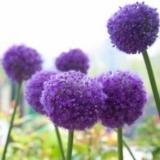
入冬后不少花友想了解盆栽菊花冬天怎么养,我们从花后修剪、冬季浇水、施肥等环节来说说冬季的养护方法,以便花友的菊花能顺利过冬。

1、花后修剪:入冬后,菊花基本也都凋谢了,这个时候我们第一件要做的事就是修剪,不少花友希望看到菊花冬天怎么修剪图片(上图), 花谢之后,如果脚芽已经长的过高,可以直接将老枝剪除, 如果脚芽未出,只剪掉老枝的一半。留几片叶子,给脚芽供给营养,脚芽在天暖健康生长时,再剪掉老枝。
2、放置位置: 菊花虽耐寒,但不能不管。一般放置于背风向阳的位置, 比如南面房檐下, 冷棚 ,向阳地窖等,晚上的气温不低于0度不高于5度最佳。 使菊花的脚芽休眠又不至于高温徒长。
选择地栽的, 北方太冷可以盖干草或者覆膜。白天通风见光。
3、冬天浇水:菊花冬季应该处于半休眠状态, 所以对水的需求不大,但又不能干旱。如果发现盆土过干,脚芽的叶子出现萎焉,是土过于干燥造成脚芽根系枯死所致, 冬季应该根据盆土的干燥情况, 保障土壤 不干透,又不过湿。浇水选择晴天的午后,气温高时进行。
4、花后是否施肥:菊花是需肥量非常大的花卉,尤其是在开花期时,消耗了非常多的盆土营养, 所以在花期后, 可以随水补充一定的肥料, 当然,不能像平时一样施肥,应该拉长施肥时间的间隔浓度也应该是平时的一半最好, 如平时生长期,6天一次施肥1000倍水溶肥, 冬季可以10天,甚至半月一次,浓度最好2000倍以上。
5、花后添土及换盆的选择:
一般盆栽的菊花,花期消耗了非常多的盆土营养,可以在花期后,给花盆里填入一些新土或者堆肥,给脚芽的发育补充营养。地栽可以覆新土,一则防脚芽冻伤,二则补充脚芽营养。
至于换盆,主要针对花市购买的成品花,现在基于成本考虑,大多数花弄选择的花盆较小,很多小菊花用的都是12-15厘米的盆,用土也普遍是椰糠 泥炭等无营养的基质,所以剪除残花后,换至稍大一点的盆内,如15的盆,可以换至18厘米的盆内,切勿直接换太大的, 以免根系发育慢,水分富余造成烂根。
6、冬季菊花管理其他事宜:
冬天的事情相对较少,可以准备来年用土, 提前堆肥,避免事情扎堆手忙脚乱。
清理残枝,残花,残叶等。 打扰种植场所,主要可以防止病虫藏匿于残叶内越冬。尤其是红蜘蛛等。冬季打扫干净,可以很大程度减轻春季病虫爆发的几率。

1、花后修剪:入冬后,菊花基本也都凋谢了,这个时候我们第一件要做的事就是修剪,不少花友希望看到菊花冬天怎么修剪图片(上图), 花谢之后,如果脚芽已经长的过高,可以直接将老枝剪除, 如果脚芽未出,只剪掉老枝的一半。留几片叶子,给脚芽供给营养,脚芽在天暖健康生长时,再剪掉老枝。
2、放置位置: 菊花虽耐寒,但不能不管。一般放置于背风向阳的位置, 比如南面房檐下, 冷棚 ,向阳地窖等,晚上的气温不低于0度不高于5度最佳。 使菊花的脚芽休眠又不至于高温徒长。
选择地栽的, 北方太冷可以盖干草或者覆膜。白天通风见光。
3、冬天浇水:菊花冬季应该处于半休眠状态, 所以对水的需求不大,但又不能干旱。如果发现盆土过干,脚芽的叶子出现萎焉,是土过于干燥造成脚芽根系枯死所致, 冬季应该根据盆土的干燥情况, 保障土壤 不干透,又不过湿。浇水选择晴天的午后,气温高时进行。
4、花后是否施肥:菊花是需肥量非常大的花卉,尤其是在开花期时,消耗了非常多的盆土营养, 所以在花期后, 可以随水补充一定的肥料, 当然,不能像平时一样施肥,应该拉长施肥时间的间隔浓度也应该是平时的一半最好, 如平时生长期,6天一次施肥1000倍水溶肥, 冬季可以10天,甚至半月一次,浓度最好2000倍以上。
5、花后添土及换盆的选择:
一般盆栽的菊花,花期消耗了非常多的盆土营养,可以在花期后,给花盆里填入一些新土或者堆肥,给脚芽的发育补充营养。地栽可以覆新土,一则防脚芽冻伤,二则补充脚芽营养。
至于换盆,主要针对花市购买的成品花,现在基于成本考虑,大多数花弄选择的花盆较小,很多小菊花用的都是12-15厘米的盆,用土也普遍是椰糠 泥炭等无营养的基质,所以剪除残花后,换至稍大一点的盆内,如15的盆,可以换至18厘米的盆内,切勿直接换太大的, 以免根系发育慢,水分富余造成烂根。
6、冬季菊花管理其他事宜:
冬天的事情相对较少,可以准备来年用土, 提前堆肥,避免事情扎堆手忙脚乱。
清理残枝,残花,残叶等。 打扰种植场所,主要可以防止病虫藏匿于残叶内越冬。尤其是红蜘蛛等。冬季打扫干净,可以很大程度减轻春季病虫爆发的几率。
2
4



